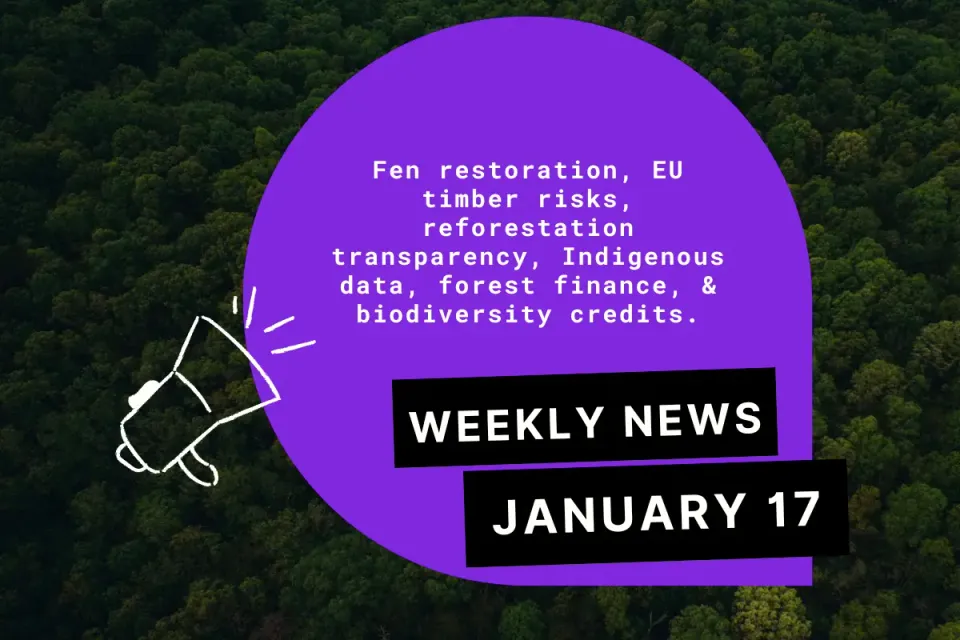Congo Eyes Monetizing Forests
...a key difference from carbon credits is that HIFOR units can’t be used by buyers to offset emissions.

This article by Rosie Pioth originally appeared in Mongabay.
- The Republic of Congo’s Ministry of Forest Economy, in partnership with the Wildlife Conservation Society, has launched an investment plan for high-integrity forests in Nouabalé-Ndoki National Park.
- The HIFOR initiative aims to fill the funding gap for well-preserved forests that aren’t eligible for carbon offsetting schemes.
- Nouabalé-Ndoki in the north of the Republic of Congo is recognized for its ecological integrity.
- By integrating sustainable economic practices, the project promises to strengthen conservation efforts while supporting local communities.\
BRAZZAVILLE — Conservation authorities in the Republic of Congo have launched a plan to invest in the protection of “high-integrity forests” in Nouabalé-Ndoki National Park, treating these ecosystems as an asset class.
Located in the northern part of the country, Nouabalé-Ndoki is also the first site in the world to be recognized for its ecological integrity under the Key Biodiversity Areas (KBA) Standard this past June.
The new initiative aims to fill a funding gap to protect the ROC’s forests by selling high-integrity forest (HIFOR) units, defined as representing “one hectare of healthy, high integrity tropical forest actively conserved within a large landscape for decades.”
“The HIFOR initiative is a payment for ecosystem services program designed to incentivize climate action and biodiversity conservation in high-integrity tropical forests by offering long-term financing to forest managers,” Rosalie Matondo, the ROC’s minister of forest economy, said at the Aug. 30 launch of the program in the capital, Brazzaville. “This project marks a very important step in the development of innovative financial mechanisms allowing our country to make the most of its efforts to conserve forests and associated ecosystems.”

The HIFOR initiative rests on three pillars: biodiversity conservation, sustainable management of forest resources and the participation of local communities. Because they’re by definition not under imminent threat, forests in this scheme aren’t eligible for carbon offsetting schemes such as REDD+. That means a key difference from carbon credits is that HIFOR units can’t be used by buyers to offset emissions. What buyers or investors get, instead, is the right to “make claims related to land conservation, climate, biodiversity, wildlife populations, and socio-economics.”
“Nouabalé-Ndoki National Park is home to one of the most diverse and intact tropical forest species communities in Central Africa, including large and healthy populations of forest elephants, western lowland gorillas and chimpanzees,” Dan Zarin, executive director of the forests and climate change program at the Wildlife Conservation Society, which developed the HIFOR mechanism, told Mongabay. “The forest stores enormous amounts of carbon and is an active sink, removing millions of tons of CO2 from the atmosphere. All of these services are at risk if the forest is not successfully conserved.”
Richard Malonga, WCS’s Republic of Congo country director, said Nouabalé-Ndoki, which WCS manages, faces threats from illegal hunting, fishing and logging. “The surrounding landscape is also increasingly threatened by deforestation, fires, and other pressures.”
WCS is evaluating other similarly valuable blocks of forest in the ROC, the neighboring Democratic Republic of Congo, and Gabon. Zarin said the HIFOR mechanism allows sites that successfully conserve large blocks of high-integrity forest to produce independently audited certificates that quantify the areas conserved and their attributes.
“The net revenue generated from the sale of the certificates is meant to be divided between the national government, park management costs, and Indigenous peoples and local communities. It is important to note that these certificates cannot be used to offset any impacts caused by buyers elsewhere,” he told Mongabay.
According to WCS, the program integrates technologies such as drone surveillance and artificial intelligence to better track wildlife movements and detect illegal activities.
Conservation challenges
At the heart of the HIFOR initiative is its effort to balance economic and ecological benefits. By diversifying sources of income for local communities, the project aims to reduce pressure on the park’s natural resources.
“Local communities are already actively involved, and we expect that the HIFOR project will expand this involvement,” Malonga said. “The HIFOR system requires that all projects develop a transparent benefit distribution mechanism, with the free, prior and informed consent of Indigenous peoples and local communities. This design process has begun for the Nouabalé-Ndoki National Park pilot project.”
Félicien Okamba Esseke, director of pollution prevention at the ROC’s Directorate General for the Environment, said it will be important not to judge the initiative before it can demonstrate its potential. “The ideas behind the HIFOR pilot project in Nouabalé-Ndoki National Park fit into Congo’s framework for environmental protection. Evaluating this project on ideas alone would be risky,” Okamba said.
He also stressed that the effectiveness of new technologies will depend on training local teams and maintaining equipment, which could be a long-term challenge in such a remote region.
If the plan works, Nouabalé-Ndoki could become a model for other countries in the region seeking solutions to combine sustainable development and biodiversity conservation.
This project could be extended to other high-integrity areas if the pilot program is successful. The HIFOR initiative brings hope for the Nouabalé-Ndoki National Park, but it remains to be seen whether it will deliver on its promises while preserving the delicate balance between economy and ecology.
A version of this article was published here on Sept. 23 on Mongabay's French site.
License
Pioth, Rosie. (2024). Congo looks to monetize its high-integrity forests. Originally published in Mongabay. Available under a Creative Commons Attribution-ShareAlike 4.0 International License. Minor changes made to original formatting.




